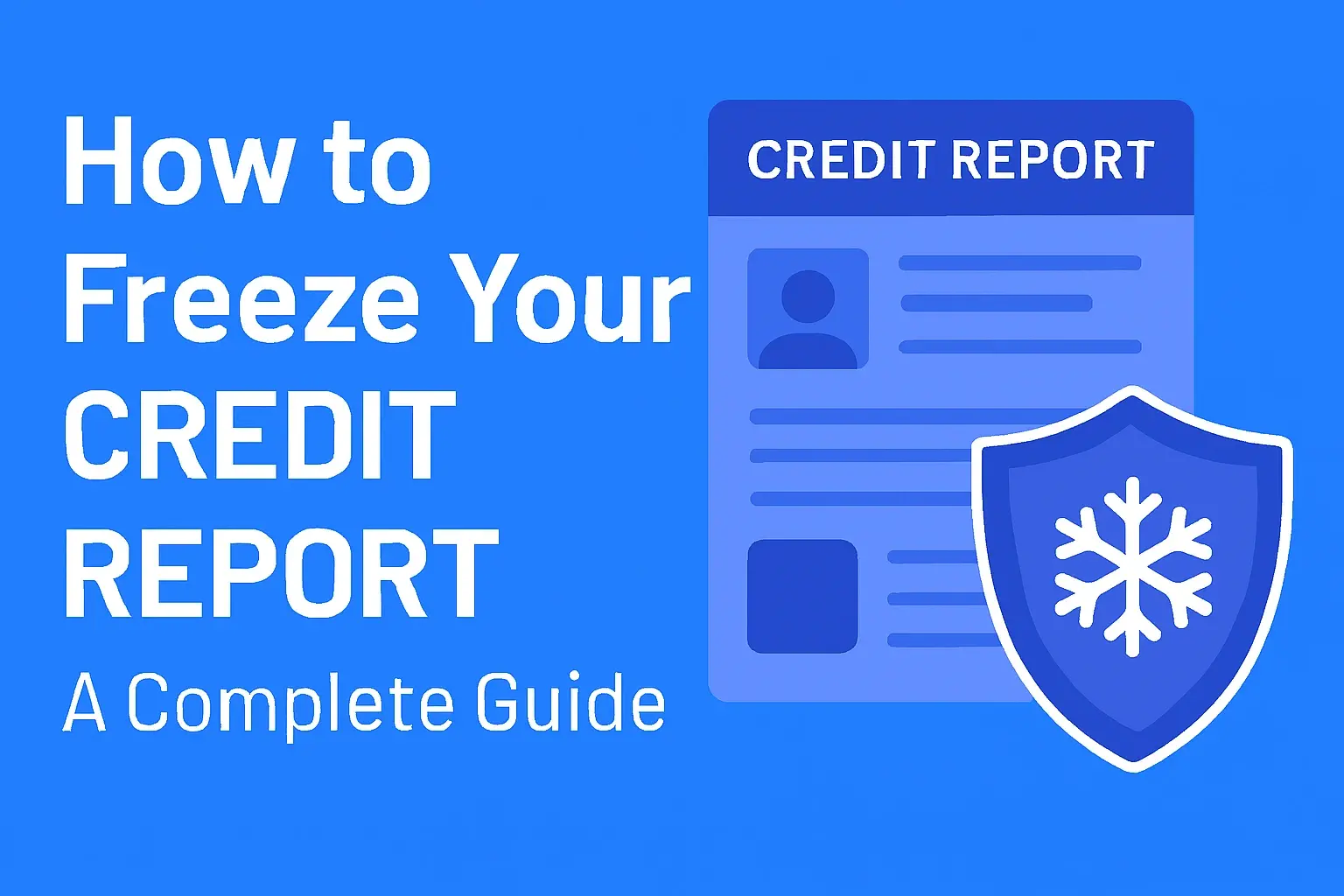-
Posted on: 15 Jul 2024

-
The question "Can you pay to reset your credit score?" is a common one, driven by the desire for a fresh start. While the direct answer is no, understanding how credit scores work and legitimate methods for improvement is crucial. This guide will demystify credit score resets and provide actionable strategies for a healthier financial future.
Understanding Your Credit Score: The Foundation
Before diving into the specifics of whether you can pay to reset your credit score, it's essential to grasp what a credit score actually is and how it's calculated. In the United States, the most widely used credit scoring models are FICO and VantageScore. These scores are numerical representations of your creditworthiness, typically ranging from 300 to 850. A higher score indicates a lower risk to lenders, making it easier to qualify for loans, credit cards, mortgages, and even rental agreements. Conversely, a lower score signals higher risk, potentially leading to higher interest rates, lower credit limits, or outright denial of credit.
Your credit score is not a static number; it's a dynamic reflection of your financial behavior over time. Lenders and other institutions use this score to make informed decisions about extending credit. Therefore, understanding the factors that influence your score is the first step toward managing and improving your financial health. The concept of a "reset" often stems from a desire to erase past financial mistakes and start anew, but the credit scoring system is designed to reflect your ongoing habits, not to be wiped clean with a payment.
The Myth of Paying to "Reset" Your Credit Score
The notion that you can simply pay a fee to have your credit score magically reset to a perfect or near-perfect state is a pervasive myth. There is no legitimate service or process that allows individuals to "reset" their credit score on demand. Credit bureaus like Equifax, Experian, and TransUnion compile credit reports based on information from lenders and creditors. These reports contain a detailed history of your borrowing and repayment activities. Your credit score is then generated from this data.
Paying a company to claim they can "reset" your score is almost always a sign of a scam. Legitimate credit improvement takes time and consistent positive financial behavior. Companies that promise instant credit score fixes are often engaging in fraudulent activities, such as disputing legitimate negative information on your credit report illegally or charging exorbitant fees for services you can perform yourself. The Federal Trade Commission (FTC) warns consumers about such deceptive practices. They emphasize that no one can legally remove accurate negative information from your credit report before it expires naturally.
The Credit Repair Organizations Act (CROA) provides some protection for consumers against fraudulent credit repair schemes. It prohibits credit repair organizations from making deceptive claims, charging for services before they are performed, and from advising consumers to dispute accurate information. Understanding these regulations helps consumers identify and avoid scams. The core principle remains: a credit score is a reflection of your credit history, and that history cannot be erased with a payment.
Legitimate Ways to Improve Your Credit Score
While a direct "reset" isn't possible, improving your credit score is absolutely achievable through consistent, responsible financial management. The key is to focus on the factors that credit scoring models prioritize. By understanding these components, you can develop a strategy to build a strong credit profile.
Payment History is King
This is the single most important factor influencing your credit score, typically accounting for about 35% of the score. Making on-time payments for all your debts—credit cards, loans, mortgages, even utility bills if reported—is paramount. Late payments, defaults, and bankruptcies can significantly damage your score and remain on your report for up to seven to ten years.
Key Actions:
- Set up automatic payments for all bills to avoid missing due dates.
- If you anticipate difficulty making a payment, contact your lender immediately to discuss options like a payment plan or deferment.
- Prioritize paying bills that are already past due.
Credit Utilization Ratio Matters
This factor accounts for approximately 30% of your credit score. It measures how much of your available credit you are using. Experts recommend keeping your credit utilization ratio below 30%, and ideally below 10%, for each credit card and across all your cards combined. For example, if you have a credit card with a $1,000 limit and a balance of $500, your utilization is 50%.
Key Actions:
- Pay down credit card balances.
- Avoid maxing out credit cards.
- Consider requesting a credit limit increase on existing cards (if you can manage spending responsibly) to lower your utilization ratio.
- Do not close unused credit cards, as this can reduce your available credit and negatively impact your utilization ratio.
Length of Credit History
This component, contributing about 15% to your score, looks at how long your credit accounts have been open and how long you've been using credit. A longer credit history generally suggests more experience managing credit responsibly. This is why it's often advised not to close old, unused credit accounts, especially if they have a positive payment history.
Key Actions:
- Keep older, well-managed accounts open.
- Avoid opening too many new accounts in a short period, as this can lower the average age of your accounts.
Credit Mix and New Credit
These two factors each contribute about 10% to your credit score.
- Credit Mix: Having a mix of different types of credit, such as revolving credit (credit cards) and installment loans (mortgages, auto loans, student loans), can be beneficial. It shows you can manage various forms of debt.
- New Credit: Opening several new credit accounts in a short timeframe can signal higher risk to lenders. Each time you apply for credit, a "hard inquiry" is typically placed on your credit report, which can slightly lower your score.
Key Actions:
- Avoid applying for multiple credit accounts simultaneously.
- Space out credit applications over time.
- If you have no credit history, consider a secured credit card or a credit-builder loan.
What About Credit Repair Companies?
The desire for a quick fix often leads people to seek help from credit repair companies. While some legitimate companies can assist, it's crucial to understand what they can and cannot do, and to be wary of red flags.
What Credit Repair Companies Can (Legitimately) Do
Reputable credit repair services can help you by:
- Reviewing your credit reports: They can help you obtain copies of your credit reports from all three major bureaus (Equifax, Experian, and TransUnion) and identify any inaccuracies or errors.
- Disputing errors: If errors are found, they can assist you in filing disputes with the credit bureaus and the original creditors. This includes incorrect personal information, fraudulent accounts, or wrongly reported late payments.
- Negotiating with creditors: Some companies may offer to negotiate with creditors on your behalf, particularly for settling outstanding debts. However, this is often a service that consumers can perform themselves.
- Providing guidance: They can offer advice on managing your credit responsibly, budgeting, and understanding your credit reports.
It's important to note that the process of disputing errors can be time-consuming, and there's no guarantee that every disputed item will be removed, especially if it is accurate.
What They Cannot Do and Red Flags
Legitimate credit repair companies cannot:
- Remove accurate negative information: They cannot remove late payments, bankruptcies, collections, or other negative marks that are accurate and within the reporting period (typically 7-10 years).
- Guarantee a specific score increase: No legitimate company can promise a particular score improvement or a "reset."
- Charge upfront fees for services not yet rendered: The Credit Repair Organizations Act prohibits charging fees before services are completed.
- Advise you to lie or mislead: They should not suggest creating a new credit identity or providing false information.
Red Flags to Watch For:
- Promises of a "quick fix" or "new credit identity."
- Requests for payment before any services are rendered.
- Lack of clear, written contracts detailing services and fees.
- Inability to explain your rights under the CROA.
- Companies that are not registered in your state or lack a physical address.
Before hiring a credit repair company, thoroughly research their reputation, read reviews, and understand their fee structure. Many consumers find they can achieve similar results by directly contacting credit bureaus and creditors themselves, saving significant fees. For more information on consumer rights, consult the Consumer Financial Protection Bureau (CFPB).
Strategies for a Fresh Start in 2025
Achieving a "fresh start" for your credit in 2025 is about building a strong foundation and demonstrating responsible financial behavior consistently. It's a marathon, not a sprint.
Building Positive Habits
The most effective strategy is to cultivate consistent, positive financial habits. This means making all payments on time, every time. Forgetting a due date can have a ripple effect, so utilizing reminders, calendar alerts, or automatic payments is crucial.
For those struggling with debt, creating a realistic budget is the first step. Understanding where your money goes allows you to identify areas where you can cut back and allocate more funds towards debt repayment. Prioritizing high-interest debt can accelerate your progress and save you money in the long run.
Managing Debt Effectively
If you have significant debt, developing a debt management plan is essential. This might involve:
- Debt Snowball Method: Pay off the smallest debts first while making minimum payments on larger ones. Once a small debt is paid off, roll that payment into the next smallest debt. This provides psychological wins.
- Debt Avalanche Method: Focus on paying off debts with the highest interest rates first, while making minimum payments on others. This method saves more money on interest over time.
- Debt Consolidation: This involves combining multiple debts into a single loan, often with a lower interest rate. This can simplify payments but doesn't reduce the total amount owed unless the new rate is significantly lower.
Remember, managing debt isn't just about paying it off; it's about preventing future over-indebtedness. This involves living within your means and avoiding unnecessary borrowing.
Monitoring Your Credit Reports
Regularly monitoring your credit reports is vital. You are entitled to a free credit report from each of the three major bureaus (Equifax, Experian, and TransUnion) every 12 months via AnnualCreditReport.com. In 2025, due to ongoing consumer protections, you can often access these reports even more frequently.
By reviewing your reports, you can:
- Identify and dispute any inaccuracies promptly.
- Track your progress as positive information is added and negative information ages.
- Stay informed about any new accounts opened in your name (potential identity theft).
Many credit card companies and financial institutions also offer free credit score monitoring services, which can provide valuable insights into your credit health.
Considering Secured Credit Options
For individuals with no credit history or a damaged credit history, secured credit options are excellent tools for rebuilding.
- Secured Credit Cards: These require a cash deposit that typically becomes your credit limit. Your spending and payment history are reported to the credit bureaus, helping you build positive credit.
- Secured Loans: Similar to secured credit cards, these loans are backed by collateral, such as a savings account or a vehicle.
- Credit-Builder Loans: Offered by some credit unions and community banks, these loans involve borrowing a small amount that is held in an account until the loan is repaid. The payments are reported to credit bureaus.
The key with these tools is to use them responsibly: make small purchases and pay them off in full and on time each month.
Understanding Credit Score Factors in Detail
To truly master your credit score, a deeper dive into the specific factors used by scoring models like FICO and VantageScore is beneficial. While the exact algorithms are proprietary, the general categories and their weightings are well-understood.
Payment History Breakdown
This is the most influential factor, comprising roughly 35% of your FICO score. It encompasses:
- Payment Records: Whether you pay your bills on time.
- Severity of Delinquency: The number of days a payment is late (e.g., 30, 60, 90 days past due).
- Recency of Delinquency: How recently a late payment occurred. Recent late payments have a more significant negative impact.
- Number of Accounts with Past Due Items: The more accounts with late payments, the worse it looks.
- Public Records: Bankruptcies, judgments, and liens are severe negative marks.
A single 30-day late payment can drop a good credit score by dozens of points. Multiple late payments, especially those exceeding 60 or 90 days, can be devastating. Conversely, a long history of on-time payments is a powerful positive indicator.
Credit Utilization Explained
Accounting for about 30% of your FICO score, credit utilization is a critical metric. It's calculated by dividing the total balance owed on revolving credit accounts (like credit cards) by the total credit limit across those accounts.
Example:
Account Balance Credit Limit Utilization Card A $500 $1,000 50% Card B $1,000 $3,000 33.3% Total $1,500 $4,000 37.5% In this example, the overall utilization is 37.5%. Lenders prefer to see this ratio below 30%, and ideally below 10%. High utilization suggests you may be overextended and at higher risk of default. It's important to note that utilization is calculated based on the balances reported by your creditors, which usually happens once a month. Paying down balances before the statement closing date can help lower your reported utilization.
Average Age of Accounts
This factor (about 15% of your FICO score) considers the age of your oldest account, the age of your newest account, and the average age of all your accounts. A longer credit history, indicated by older accounts, generally suggests more experience managing credit.
For instance, if your oldest account is 10 years old and your newest is 1 year old, your average account age will be lower than someone whose oldest account is 15 years old and newest is 3 years old. This is why closing old, well-managed accounts can sometimes negatively impact your score by reducing the average age of your credit history.
Types of Credit Used (Credit Mix)
This accounts for roughly 10% of your FICO score. Lenders like to see that you can manage different types of credit responsibly. This includes:
- Revolving Credit: Credit cards, lines of credit.
- Installment Credit: Mortgages, auto loans, personal loans, student loans.
Having a mix can be beneficial, but it's not necessary to have every type of credit. For example, a person with only credit cards but excellent payment history and low utilization will likely have a good score. The key is to demonstrate responsible management of the credit you do have. Opening new accounts solely to improve your credit mix is generally not recommended, as the hard inquiry and the impact on your average account age can outweigh the benefits.
Recent Credit Activity (New Credit)
This factor (about 10% of your FICO score) looks at how many new accounts you've opened recently and how many hard inquiries are on your report.
- Hard Inquiries: Occur when a lender checks your credit report because you applied for credit. Too many hard inquiries in a short period can indicate you are seeking a lot of new credit, which is seen as a risk.
- New Accounts: Opening multiple new accounts in a short timeframe can also lower your average account age and signal increased risk.
Shopping for the same type of loan (like a mortgage or auto loan) within a short window (typically 14-45 days, depending on the scoring model) usually counts as a single inquiry, allowing you to compare rates without significantly harming your score. However, applying for multiple credit cards or personal loans within weeks will likely have a more pronounced negative effect.
Common Misconceptions and Myths
Beyond the "pay to reset" myth, several other misconceptions surround credit scores:
- Closing a credit card will immediately boost your score: While it might slightly reduce your available credit and increase your utilization ratio, closing an old, positive account can also lower your average credit history length, potentially hurting your score.
- Checking your own credit score hurts your score: This is false. Checking your own credit report and score (a "soft inquiry") does not affect your credit score. Only "hard inquiries," resulting from credit applications, can have a minor impact.
- All negative information stays on your report forever: Most negative information, like late payments, has a limited reporting period, typically seven years. Bankruptcies can stay for seven or ten years, depending on the type.
- Paying off collections immediately removes them: Paying off a collection account often doesn't remove it from your report; it will be updated to show a zero balance, which is better than an outstanding debt, but the negative mark remains for its reporting period.
- Your credit score is the same everywhere: Different lenders may use different scoring models (FICO, VantageScore) and different versions of these models, leading to slight variations in your score.
Understanding these nuances helps you make informed decisions about managing your credit.
Conclusion: Your Path to Credit Health
In conclusion, the direct answer to "Can you pay to reset your credit score?" is a resounding no. There is no magic button or service that allows for an instant credit score reset. Such offers are almost universally scams designed to exploit your desire for a quick fix. Legitimate credit improvement is a process that requires time, discipline, and consistent positive financial behavior.
Your credit score is a reflection of your financial history, and building a strong one involves mastering the fundamental factors: making on-time payments, keeping credit utilization low, maintaining a longer credit history, managing a healthy credit mix, and being judicious with new credit applications. By focusing on these elements, you can gradually and effectively improve your creditworthiness. For those facing significant credit challenges, consider working with reputable credit counseling agencies or taking advantage of the tools and resources available from consumer protection organizations. Remember, a healthy credit score is within reach through informed decisions and persistent effort, paving the way for a more secure financial future in 2025 and beyond.





